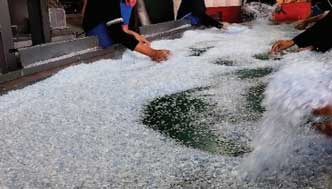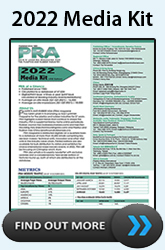Ocean-bound plastics: gamechanger sustainable material

According to the Ellen MacArthur Foundation, by 2050, the amount of waste plastic in the oceans will have surpassed the 895 million tonnes of fish. Given the amount of poorly managed plastic waste in the environment, this prediction is not exaggerated.
Single-use plastics are estimated to have tripled during the pandemic, and waste management has remained largely unsustainable. This risk can be mitigated by shifting to a circular economy and abandoning the traditional linear "take-make-dispose" model.
Opportunities to repurpose plastic waste into high-value products are ingrained in a circular economy. Ocean-bound plastics (OBPs), which are waste plastics that may end up in the ocean, are gaining traction in a variety of consumer applications
They are typically found within 50 km of coastlines where waste management is either lacking or ineffective, with around 80% ending up as marine litter.
More than 11 million tonnes/year of plastic enter oceans, according to the Ocean Conservancy and the Pew Research Center, and by 2040 the rate could triple. Asia’s pursuit for a circular economy Asia is a major hotspot for plastic waste leakage into the ocean. Every year, more than half of ASEAN produces over 31 million tonnes of plastic waste. Meanwhile, because of their shared river systems, connected coastlines, and international trade in plastic products and waste, national efforts by these member states to combat the risk of marine litter have not yielded significant gains, according to a 2021 statement by the World Bank on the ASEAN regional action plan to tackle plastic pollution.
Despite this, the region continues to develop its circular economy strategy, improve its waste management systems and increase its adoption of biodegradable materials.
According to the Alliance to End Plastic Waste, investments in Asia are also critical to assisting the region in its transition, with an estimated US$1.2 trillion required for the switch to a circular economy.
Alliance, a non-profit organisation that brings together government, companies and community to end plastic waste in the environment, stated, “investment into a circular economy for plastic is vital to facilitate sustainable development in Asia, which is home to 60% of the global population.” Against this backdrop, Alliance is leading global and regional efforts to eliminate plastic waste by catalysing investments and forming collaborative partnerships.
The Alliance Prize in Circular Solutions for Flexibles is one of its new initiatives to boost the circular economy in the region. Its goal is to find new ways to improve the collection, processing, and recycling of flexible plastics found in household waste, which are one of the most difficult materials to process and recycle. The prize will award US$3 million to one winner to help them develop a commercially viable solution that can be scaled widely.
In addition, the winner will gain access to valuable mentorship opportunities and expertise from across the plastics value chain.
Meanwhile, Alliance and Lombard Odier Investment Managers have teamed up to launch a US$500 million circular plastic fund as part of their ongoing efforts to support the transition to a circular economy for plastic. The fund, according to Alliance, will target institutional and other accredited investors for scalable solutions to remove plastic waste from the environment, increase recycling and drive a global circular economy for the plastic value chain.
Conquering waste plastics through communities
OBP's story does not end where the oceans and the shore meet. In fact, the devastation begins when these waste plastics degrade when exposed to salty water and sunlight within a few days, rendering them largely unsuitable for recycling, according to Prevented Ocean Plastic (POP), a brand by UK-based Bantam Materials, which recycles plastic collected from coastal areas.

The programme engages communities to collect waste plastic bottles that could end up in the ocean. The collected plastic bottles are delivered to local collection facilities for payment, where they are sorted and pressed before being transported to plastic recycling plants.
Plastic waste is washed, sanitised, and processed into raw material flakes or pellets at the factory, all in accordance with European and North American quality standards. The programme, which to date, has recycled over 1,000 tonnes of these waste materials ensures that the recycled plastic has certified traceability from coastline collection until it becomes sustainable recycled packaging used by supermarkets and global brands.
(PRA)
Subscribe to Get the Latest Updates from PRA Please click here
©2022 Plastics and Rubber Asia. All rights reserved.

©2022 Plastics and Rubber Asia. All rights reserved.
Home Terms & Conditions Privacy Policy Webmail Site Map About Us



















